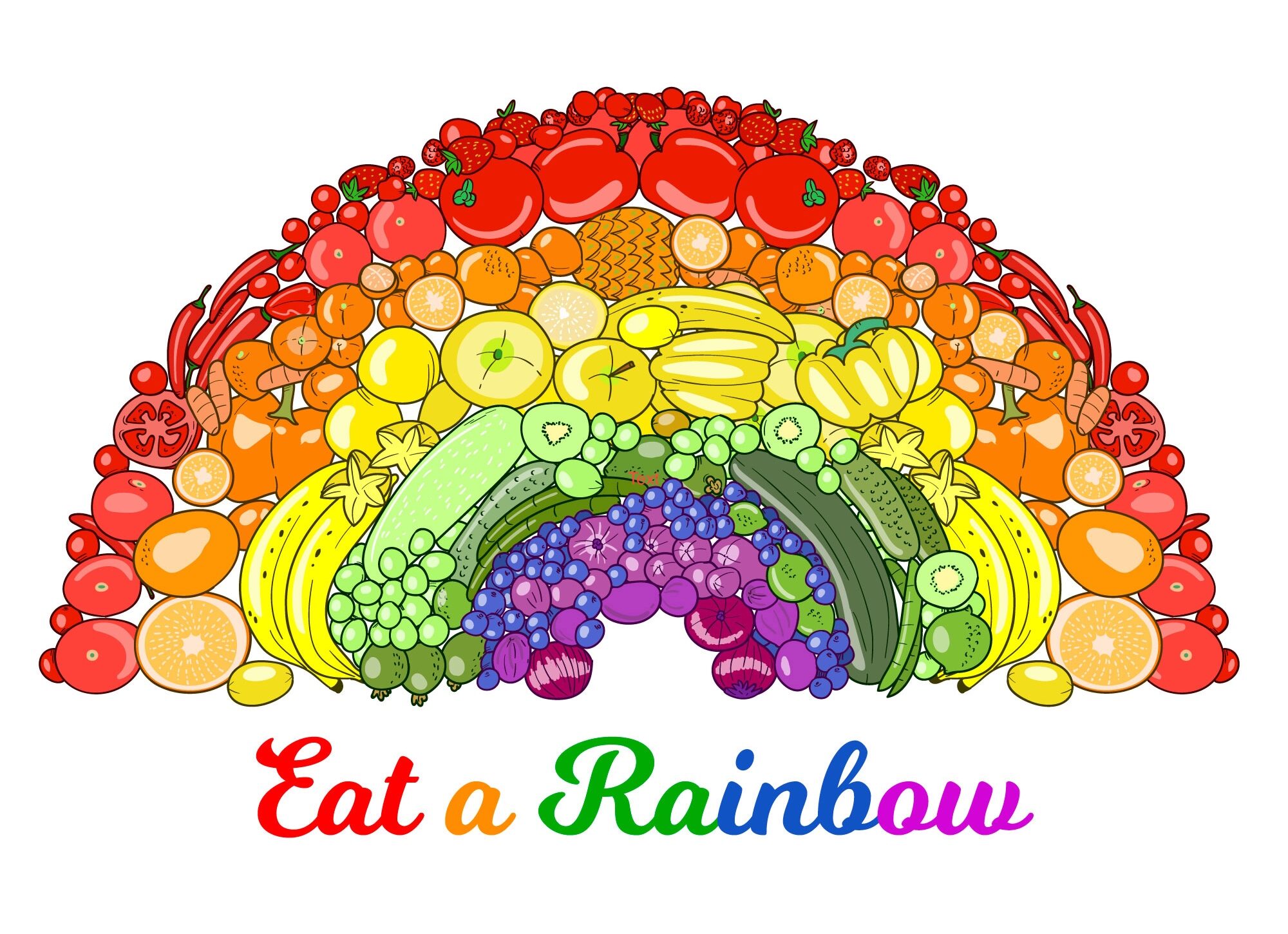I grew up in the 1980s, when everything was about counting calories and reducing fat and cholesterol intake. Back then, dietary guidelines suggested cutting fats in favor of carbohydrates. At the same time, we saw a major shift from whole foods to ultra-processed foods – think the addition of high fructose corn syrup and artificial sweeteners. It was the perfect storm for many of today’s chronic health issues.
I remember my parents buying I Can’t Believe It’s Not Butter! because it was marketed as a healthier (and cheaper) alternative to butter. If it was good enough for Fabio who were they to argue? My Granny used to have a bowl of Sweet ‘N Low on the dining table rather than a sugar bowl. Even the astronauts didn’t want to go without their diet coke – special cans were designed for the space shuttle Challenger in 1985.
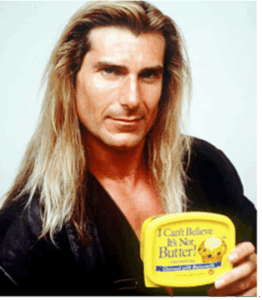
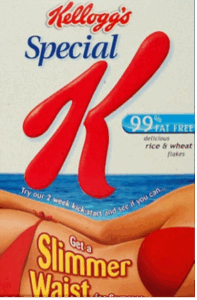
Public health campaigns encouraging healthier eating have evolved significantly over the years – with mixed results. While awareness of nutritious foods and healthy habits has improved, actual changes in eating behavior have been more modest. Some of the barriers to sustainable change are the cost of organic or whole foods, limited variety in some area, portion control challenges when eating out, reliance on convenience meals due to busy schedules, and a general lack of planning. Research shows that most of us show up to the grocery store without planning what to buy. And of course, food companies are under pressure to maximize profits – not improve the health of their consumers.
A Quick Timeline of Healthy Eating Campaigns in the U.S.
The government has been trying to help Americans make healthier food choices for decades. In the 1940’s, the recommendation was simple: eat one item from every food group.
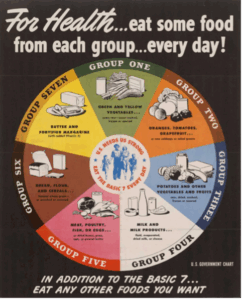
- By the late 1970’s the focus shifted to avoiding “bad” nutrients (like fat) instead of ensuring we are getting enough of the good ones. Check out this food wheel from 1980. It encourages moderation across food groups.
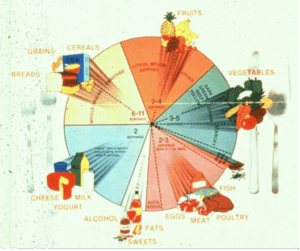
- In 1988, California launched its 5 A Day for Better Health! campaign, encouraging five servings of fruits and vegetables per day. This was also adopted by several other major organizations, such as the National Cancer Institute.
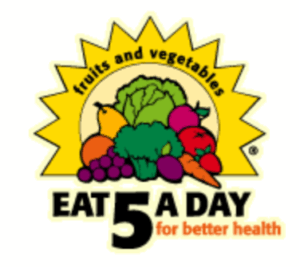
- In 1992 the iconic USDA Food Pyramid was introduced, with carbohydrates as the foundation.
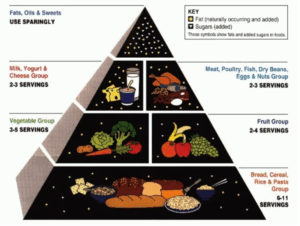
- As obesity and diabetes rates rose, in 2005 new guidelines emphasized physical activity. Notice the character climbing up the pyramid.
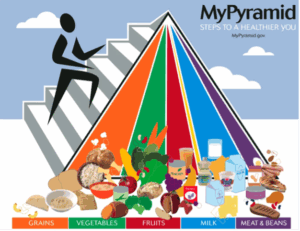
- By 2011 the pyramid was replaced by MyPlate which visually reinforced the idea that vegetables – not carbs – should take up the largest portion of our meals. MyPlate.gov also has online tools to help with meal planning and recipe ideas.
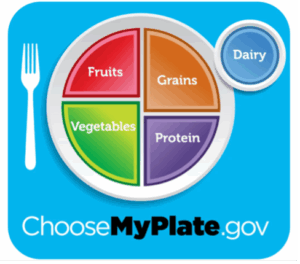
- Lastly, Eat the Rainbow. While not new, this campaign offers a simple, memorable takeaway: health comes not just from eating fruits and vegetables, but from eating a variety of plant-based foods.
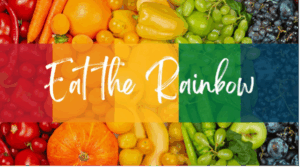
Why You Should Increase Plant Diversity in Your Diet
Fiber, vitamins, minerals, phytochemicals, and antioxidants from plants keep our bodies functioning well and our immune system supported – and we cannot get these things from non-plant sources. By eating a range of plant foods, we increase the diversity of our gut flora and this improves overall health. When I say a variety of plant foods, I’m not limiting the list to fruits and vegetables, but also including whole grains, herbs and spices, seeds, nuts, and legumes.
A healthy gut microbiome helps with many things, like control of blood sugar, protecting the gut barrier, and even communication with our brain to produce hormones and mood boosting chemicals like serotonin. Perhaps most importantly, a plant-based diet is high in fiber and the number one thing your gut wants is fiber.
Come for the Fiber…Stay for the Short Chain Fatty Acids
Fibers are forms of carbohydrates that cannot be broken down by the small intestine and are fermented by gut bacteria in the large intestine. There are two types of fiber: soluble and insoluble.
- Soluble fiber turns to a gel in our gut (kind of like how chia seeds plump up in liquid) and this slows down the process of digestion which helps keep blood sugar levels stable. Some examples of foods with soluble fiber are oats, barley, beans, lentils, peas, nuts, seeds, apples, bananas, and carrots.
- Insoluble fiber is the main source of food for out gut microbes and is partially broken down by the process of fermentation in the large intestine. This is the stuff that keeps things moving (ifyouknowwhatimsayin). It’s found in whole grains, leafy greens, and fruits with edible skins. Some foods are a good source of both types of fiber, such as cauliflower.
When undigested fiber is fermented by bacteria in the colon short chain fatty acids (SCFAs) are released and this is where the magic happens! As the name implies, SCFAs are acidic and decrease the pH in the gut, which is the preferred environment for the beneficial microorganisms that live there. These acids have a multitude of benefits ranging from inhibition of inflammation and cancer (esp. colon cancer) to regulating apatite, our immune system, and energy levels. Other than dietary influence, the availability of SCFAs is also determined by environmental factors like antibiotic use and the state of your microbiome.
How Much Fibeer Do You Need?
The recommended daily fiber intake for adults is 30 grams. That may sound abstract, like how much is 30g anyway? Here are a few examples to show you what it looks like:
- If you eat a sweet potato you get about 3.5 grams of fiber (soluble and insoluble)
- A cup of coffee and an apple provides about 5g of fiber (don’t peel the skin!).
- A chicken sandwich with lettuce on whole grain break is about 6g of fiber.
To get a clearer picture of your intake, it may be helpful to use a food tracking app like Cronometer or Plant Power.
If you’re not used to eating a diet high in fiber, start slowly. You are likely to experience gas and bloating at first while your body adjusts.
The Power of Variety
I once heard a cruise ship comedian joking about all the food and drink available and how he avoids the lido deck because he’s trying to keep his temple clean. Honestly, it still makes me laugh when I think about it, jokes – it’s all about the delivery. I’d guess reading this is not the right delivery for a food joke loosely based on the bible so let’s move on. My point is eating a variety of plant-based foods goes far beyond maintaining a healthy weight.
- If you want a range of antioxidants – vitamins and minerals that neutralize free radicals – then you can’t eat the same things all the time. (Incidentally, only 12 plant species and 5 animal species account for 75% of the world’s food production!) Vitamins A, C and E along with minerals like copper, zinc, and selenium, are found in different foods and going back to the rainbow metaphor, different colored foods have different nutritional values.
- Some nutrients help absorb others. For example, vitamin C can help with the absorption of iron while compounds in beans can reduce zinc absorption.
It should be noted that there are other factors that can reduce nutrient absorption, such as food intolerances, an inflammatory diet full of processed foods and sugars, the natural aging process, and simply eating too quickly and not chewing our food properly.
Next Steps
Now that you understand why plant diversity matters and how fiber supports your gut health, stay tuned for the next article. I’ll share practical tips for incorporating more plant-based foods into your daily routine.

